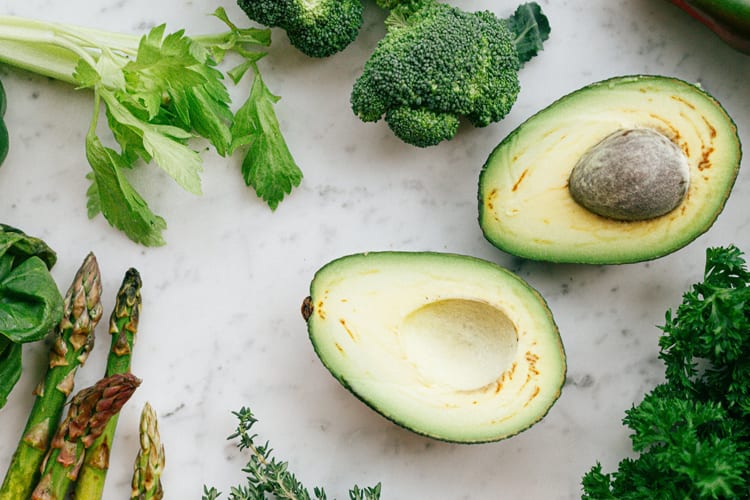Save Money and Easily Grow Kitchen Staples at Home

Grocery shopping in the age of coronavirus isn’t as easy as it used to be. Shoppers face empty shelves, long lines, and limited products every time they go to the store nowadays. Some people have been hoarding non-perishables for weeks, but that’s not all. Anything fresh – like fish, meats, fruits, and veggies – is bought almost as soon as it’s restocked.
As a result, more people have turned to growing some of their own food. The weather is getting nicer and many want a hobby to pass the time while staying home. Unfortunately, that created another complication – even seeds are hard to come by in stores.
If you’ve already purchased seeds, starting your “quarantine garden” shouldn’t be too difficult. You just need sunlight, water, and a little bit of love. If you aren’t stocked up, there are still unconventional ways to start growing food at home. In fact, even old food scraps can launch your garden. Even your organic scraps!
Starting a DIY Quarantine Garden
First things first, decide what you want to grow. You can easily grow tons of root vegetables and herbs without much maintenance or supplies, but some things take a greener thumb than others. Here are some popular veggies you can grow, and what you need to do:
Potatoes: Take a potato with a few “eyes” on it, those growths you usually chop off before cooking. Slice it in half and leave the potatoes out overnight to dry. Room temperature will do, so don’t worry about refrigerating them. Then, plant them outside with the eyes up. Each potato half should be roughly four inches into the ground and one foot away from each other. Slowly, you’ll have potatoes growing!
This method will also work if you want to grow potatoes that have sprouted in buckets:
Tomatoes: You can get tomato seeds from virtually any tomato, and instead of tossing them, you can save them to grow. Just rinse the seeds and leave them out to dry, then place them in a pot with soil. After they sprout a few inches, you can move them outside if you like, but a sunny place inside will work too. Just make sure to water them roughly every other day.
Lettuce: Lettuce grows very fast compared to some of the other staples on this list, so it’s a good pick if you’re looking for quick results. All you need is the bottom of a stalk and a bowl with a bit of water. Place the lettuce at the bottom of the bowl and you’ll see growth pretty soon. As the leaves grow, spray them with water daily to keep them crisp. When you notice new roots growing, you can move your plant outdoors.
Avocado: Avocados are in high demand no matter what time of year it is, so growing your own can be a great way to save cash and turn heads. Take an avocado pit, wash it and dry it. Now comes the interesting part. Stick four toothpicks into the pit, evenly spaced, and use them to balance the pit over a small bowl of water (round side down). The water should cover the bottom inch of the pit, but not submerge it entirely. The water should be warm but out of direct sunlight, and add more as needed. It’ll take a few weeks, but you’ll see growth from the top of the pit. When the plant gets to be over six inches, transport it to soil and water regularly.
Celery: Like lettuce, celery regrows easily and quickly. Chop off the bottom inch of a celery stalk and move it into a bowl with some warm water. If you keep the bowl in sunlight, after a few days some leaves will sprout from the stalk. When that happens, you can move it into soil in a pot or outdoors and let it grow.
Cherries: Believe it or not, you can grow a cherry tree with just one pit, as long as you’re dedicated for a few months. You need to keep the pit in cold temperatures for at least 12 weeks, so after eating a cherry, you should pack the pit in a closed container with soil and leave it in the back of your fridge. After about three months, move the pit into the ground and watch it grow!
Onion: As gardening goes, growing onions is about as low maintenance as it gets. Slice off the bottom of an onion and plant it in a sunny spot. Soon, you’ll see new roots sprouting, and you can discard the old onion and let the new ones grow.
Saving Money in the Kitchen
While not every scrap or leftover can be used to grow your next meal, most people waste a lot of money on food every year. Beyond just growing your own food and preserving leftovers, there are tons of ways to save some money in the kitchen every year. The average family of four spends roughly $7,700 each year on groceries, so even cutting spending by 5 percent can make a major difference over the course of the year.
Whether you utilize cash back apps like Ibotta and other money saving apps, grow your own food, or try budgeting challenges to spend less, a little bit can go a long way.









